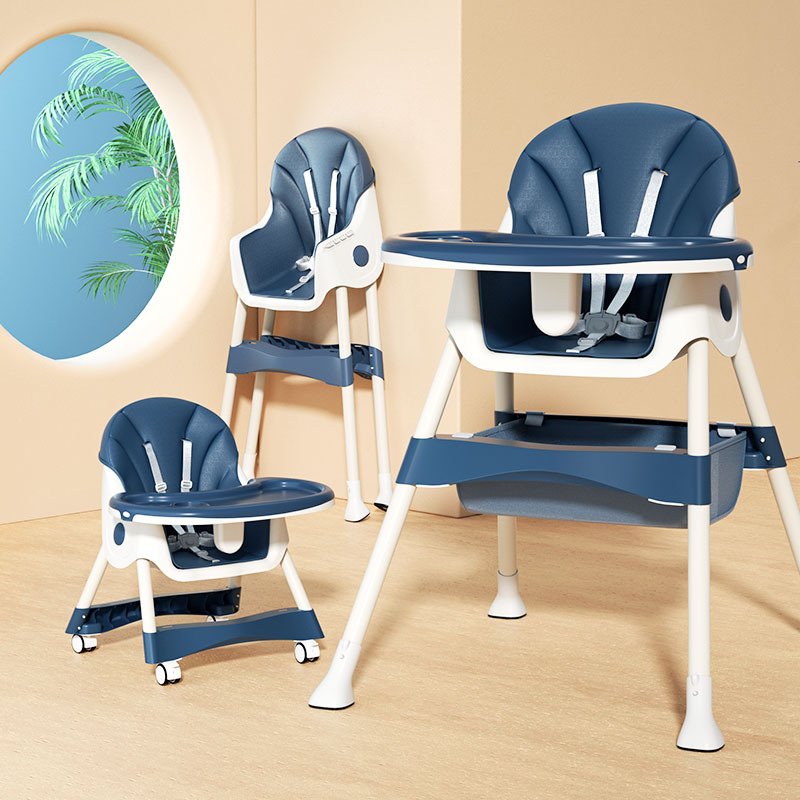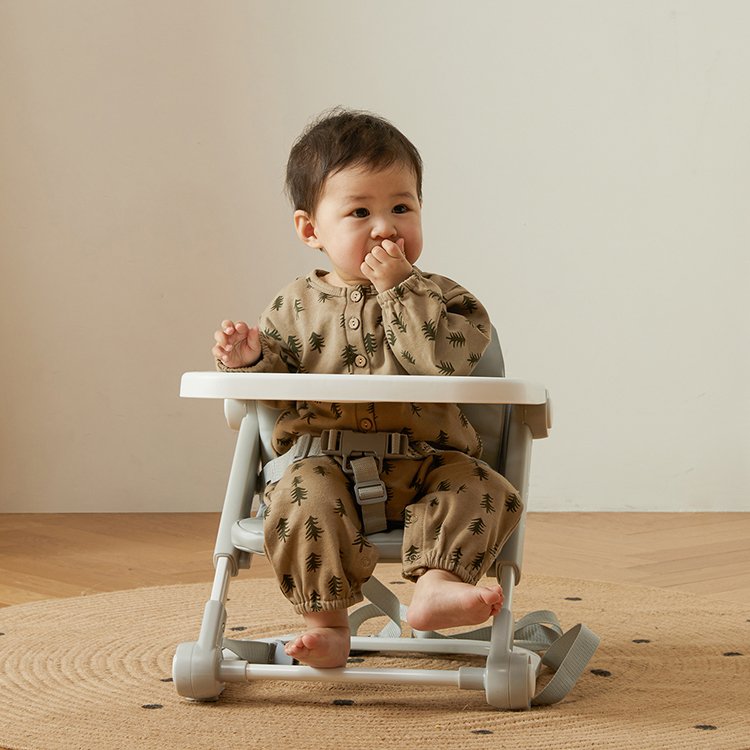Introduction
When your baby starts showing interest in solid foods, one of the biggest questions parents face is: Should I buy a high chair or a booster seat? Both options are designed to make mealtime easier and safer, but they cater to different needs, spaces, and stages of your child’s growth. Choosing between them can feel overwhelming, but don’t worry—we’re breaking down everything you need to know to make the right choice for your little one.
Table of Contents
- Introduction
- Understanding the Basics
- Key Differences Between High Chairs and Booster Seats
- Advantages of Using a High Chair
- Advantages of Using a Booster Seat
- When to Transition from High Chair to Booster Seat
- Factors to Consider Before Buying
- Top Tips for Safe Use
- Common Mistakes Parents Make
- Best Scenarios for Each Option
- Final Verdict
- Conclusion
- FAQs
- Share This Case:
Understanding the Basics
What Is a High Chair?
A high chair is a tall, standalone seat that lifts your baby to table height for feeding. It typically includes a sturdy frame, a built-in tray, a harness for safety, and sometimes even reclining positions for younger infants. High chairs are ideal for babies who are just starting solids, generally around 6 months old.

High Chair for Toddler
Light Weight Portable Baby High Chair for Both Infants and Toddlers
Features
- Stable & Safe Structure
- Adjustable Settings
- Comfortable Seating
- Removable Tray
- Foldable & Portable Options
- Modern Aesthetic
What Is a Booster Seat?
A booster seat is a compact, portable seat designed to attach to a regular dining chair. It “boosts” your child up to the right height to join the family at the table. Booster seats usually come into play when your toddler outgrows their high chair—around 18 months to 3 years old—and is ready to sit more independently.

Portable Foldable Booster Chair for Baby
High Chair for Toddlers Folding Portable Booster Seat Babies/Kids Feeding Chair for Dining Table
Features
- Stable and Comfortable
- Fold and Take it Anywhere
- 4 Adjustable Heights
- Easy Clean
- Easy to Install and Take Down
Key Differences Between High Chairs and Booster Seats
Design and Structure
High chairs are freestanding and bulky, often made with wide bases for stability. Booster seats, on the other hand, are attachable and minimalist, taking up less space.
Age and Weight Suitability
High chairs are for infants to early toddlers (6 months–2 years), while booster seats cater to older toddlers and preschoolers (up to 5 years, depending on weight).
Safety Features
High chairs typically feature 5-point harnesses, padded seats, and non-slip bases. Booster seats may include a 3-point harness and chair straps, relying on the dining chair’s stability.
Portability and Storage
If you travel or dine out often, booster seats win hands down. They’re lightweight, foldable, and easy to carry. High chairs are better suited for home use and usually not travel-friendly.
Ease of Cleaning
Most modern high chairs have removable trays and washable covers, but they can still trap crumbs in crevices. Booster seats are simpler to wipe down with fewer parts.
Advantages of Using a High Chair
Superior Stability
High chairs offer excellent stability, making them a safe choice for wiggly babies who are still learning to sit upright.
Ideal for Younger Babies
Since they often come with recline settings, high chairs are perfect for babies just starting solids who need extra support.
Added Comfort and Safety
With padded cushions, secure harnesses, and tray systems, high chairs make feeding both safe and comfortable for your little one.
Advantages of Using a Booster Seat
Compact and Portable
A booster seat’s greatest strength is its mobility. Whether you’re visiting grandparents or going on vacation, it’s easy to pack up and take along.
Budget-Friendly Option
Booster seats are generally more affordable than high chairs, making them a great choice for families with limited budgets or space.
Encourages Family Dining at the Table
Booster seats bring your toddler right up to the dining table, helping them feel included and promoting good eating habits early on.
When to Transition from High Chair to Booster Seat
Signs Your Baby Is Ready
Look for cues like:
- Sitting up without support
- Reaching for food independently
- Showing interest in joining family meals
- Trying to climb out of the high chair
Recommended Age and Milestones
Most children transition to a booster seat between 18 months and 2.5 years. Every child develops differently, so trust your instincts and your child’s comfort level.
Factors to Consider Before Buying
Space Availability
If you live in an apartment or have a small dining area, a foldable high chair or a compact booster seat is ideal.
Lifestyle and Travel Habits
Families who travel frequently will appreciate a portable booster seat, while those who mostly dine at home might prefer a sturdy high chair.
Ease of Maintenance
Babies are messy eaters! Choose a seat with wipeable materials, detachable trays, and machine-washable covers for easy cleanup.
Top Tips for Safe Use
Proper Installation and Strapping
Always secure the straps tightly—both the seat’s harness and the chair attachment straps. A loose seat can lead to tipping accidents.
Regular Cleaning and Inspection
Check for loose screws, frayed straps, or cracks regularly. Clean the seat after every meal to prevent mold or bacteria buildup.
Supervision During Mealtime
Never leave your baby unattended, even for a second. Babies are surprisingly fast when it comes to wriggling out of straps!
Common Mistakes Parents Make
Skipping Safety Straps
Even a confident sitter needs the straps fastened. Many accidents happen because parents assume their child “won’t move much.”
Using the Seat Too Early or Too Late
High chairs are for babies who can sit up, and booster seats are for toddlers who can balance well. Using them prematurely can be risky.
Ignoring Weight Limits
Always check the manufacturer’s guidelines. Overloading the seat can compromise stability and safety.
Best Scenarios for Each Option
When to Choose a High Chair
- You have enough space at home.
- Your baby is under 18 months.
- You prefer a dedicated feeding area.
- You value comfort and safety above portability.
When a Booster Seat Makes More Sense
- You’re tight on space.
- Your child is a confident toddler.
- You want a budget-friendly, portable solution.
- You like your child to sit directly at the family table.
Final Verdict
So, should you go for a high chair or a booster seat? The answer depends on your child’s age, your lifestyle, and how much space you have. High chairs are unbeatable for babies starting solids—they’re sturdy, comfortable, and safe. Booster seats, however, are fantastic for toddlers ready to eat with the family and for parents who love convenience.
If possible, consider both! Start with a high chair and transition to a booster seat when your child is ready. That way, you’ll have the best of both worlds.
Conclusion
Choosing between a high chair and a booster seat doesn’t have to be stressful. It’s all about matching your child’s development with your lifestyle needs. Whether you prefer the structure of a high chair or the flexibility of a booster seat, what matters most is that your little one enjoys safe, happy, and shared mealtimes with the family.
FAQs
1. At what age should my baby start using a high chair?
Most babies are ready around 6 months old, once they can sit upright without support.
2. Can I use a booster seat instead of a high chair for a baby?
It’s not recommended. Booster seats are meant for toddlers who can sit steadily without assistance.
3. How long can my child use a booster seat for eating?
Many booster seats can be used until around 4–5 years old, depending on weight limits.
4. Are high chairs harder to clean than booster seats?
Usually, yes. High chairs have more parts, but models with detachable trays and washable covers are easier to maintain.
5. Which is safer: a high chair or a booster seat?
Both are safe when used correctly. Always strap your child in securely, follow weight limits, and never leave them unattended.



